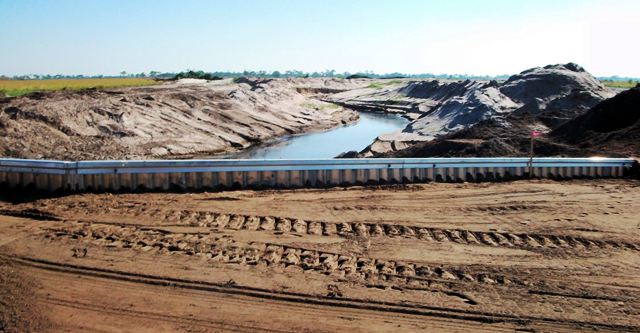South Florida Water Management District
Nubbin Slough Stormwater Treatment Area Rehabilitation
This project involved remediating issues impacting the operation of the Nubbin Slough Stormwater Treatment Area. The scope included correcting deficiencies in two perimeter levees by raising the berms; excavating undesirable material in the ditches and placing geotextile fabric and filter sand; installing culverts; and sodding the side slopes. Additionally, ETS removed old stilling wells and installed new stilling wells. The project also involved constructing an access ramp and staging area to allow District parking and access to the levees from the South as well as permanent fencing.
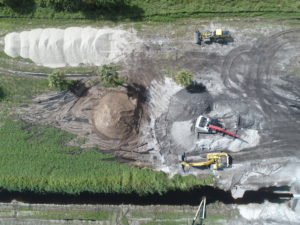
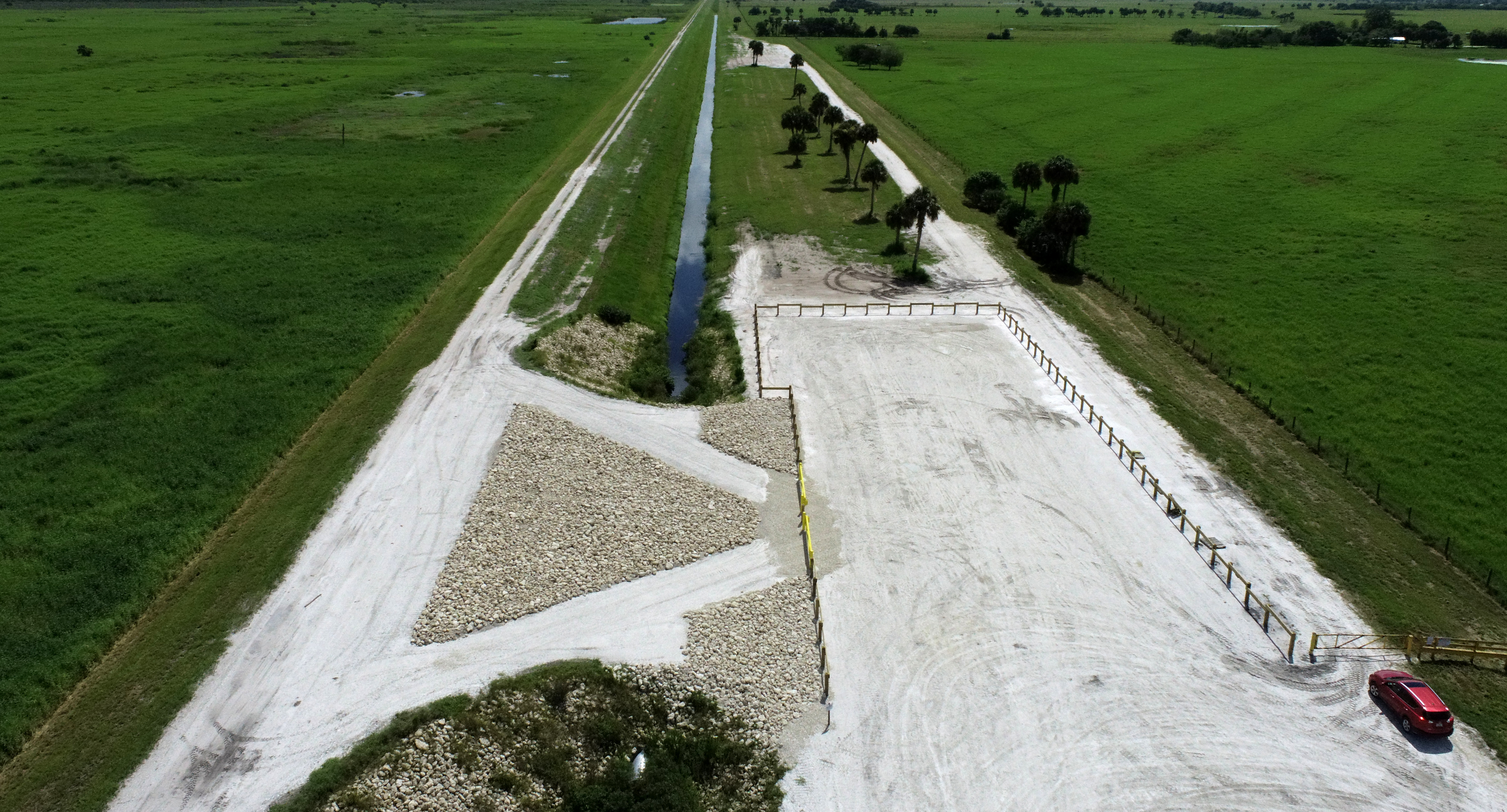
Blattner Energy
Tallahassee Airport Solar Farm
This project involved the site preparation for a Solar Energy Facility to be constructed in Tallahassee, Florida. The project involved clearing and grubbing; heavy clearing of large trees and shrubs that were uprooted using excavators; clearing of small trees, shrubs, and dense vegetation using a Hydro-Axe with horizontal grinding heads and tractors equipped with roller choppers; grinding and chipping debris; burning using an Air Curtain; disk cutting; disk leveling; site grading; construction of unimproved road with aggregate base and laydown area with lime rock road base; dust suppression; and seeding and sodding.
Lee County
Nalle Grade Hydrological Restoration
The goal of this project was to construct water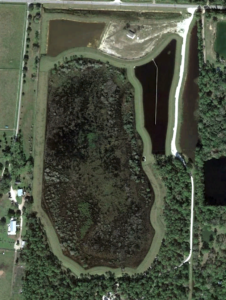 quality improvements to an area contributing to Bayshore Creek. This project involved the environmental restoration of on-site wetlands and environmentally sensitive areas. To this end, ETS constructed two open water features, an impoundment area, berm, pump station, and associated drainage facilities.
quality improvements to an area contributing to Bayshore Creek. This project involved the environmental restoration of on-site wetlands and environmentally sensitive areas. To this end, ETS constructed two open water features, an impoundment area, berm, pump station, and associated drainage facilities.
Incidental work included turbidity and erosion control, clearing and grubbing, land leveling, excavation, embankment, grading, and sodding.
New culverts were installed under Nalle Grade Road, which involved significant MOT and a ROW Permit for a full road closure.
St. Lucie County
Teague Hammock Preserve Restoration Project
The Teague Hammock Preserve Restoration project was started by Enviro-Tech Systems, Inc. in July of 2021 and completed in May of 2022.
Historically, the area was heavily impacted by the installation of drainage and conversion for agriculture, which fragmented historic drainage patterns. The project is located within the C-24 canal drainage basin, which is considered a major contributing source to the impairment of the lower St. Lucie River and Indian River Lagoon Estuaries. The goal of the project is to provide an additional 300-acres of groundwater recharge and natural area storage that will reclaim agricultural water discharges and restore priority wetland habitat for threatened and endangered species.
Restoration of wetlands reduce nutrient concentrations to downstream waters, attenuate flooding, increase storage and hydroperiods, and improve habitat for fish and wildlife. Additionally, the project will reduce the future costs to manage invasive/exotic vegetation. Once completed, this project will reclaim and store agricultural runoff before it reaches the C24 drainage basin. By restoring wetlands in the preserve, St. Lucie County can help clean surface water impacted by agricultural operations before it reaches tributaries to the St. Lucie River and the Indian River Lagoon. The newly restored wetlands will significantly reduce unwanted nutrients, including nitrogen and phosphorus, helping to improve water quality as this runoff is slowly released back into the estuaries.
To this end, the construction activities performed by ETS include earthwork, mowing, ditch cleaning, grading, improving and constructing berms, levees, and dikes as well as the construction of outfalls, flap gates, culverts, and low water crossings.
SFWMD & Lykes Bros., Inc.
Water Impoundment and Pump Station
ETS completed the construction of a water impoundment and drainage pump station for an 8,000-acre SFWMD dispersed water management project. For this project, ETS constructed over 16 miles of levee to create the water impoundment. The purpose of the pump station, designed by RCS and constructed by ETS, is to deliver stormwater from the SFWMD’s C-41A canal into the above ground impoundment to meet water quality treatment goals. To this end, a maximum flow rate of 242,000 GPM was required from the pump station. The pump station included six 42” diameter vertical axial flow, 200 HP electric pumps each capable of a flow rate of 42,000 GPM. The pumps are dynamically controlled by the water level in the C-41A. The project also included six steel pump and motor mounting frames that were assembled into a complete platform on the job site. A 135’ long, 30’ deep steel sheet pile wall was specified to support the pumps over the water and a concrete slab at the bottom of the pump sump to prevent the pumps from undermining the wall. The pump station and impoundment was dedicated in a ceremony attended by Florida state government officials, land owners, and District employees.
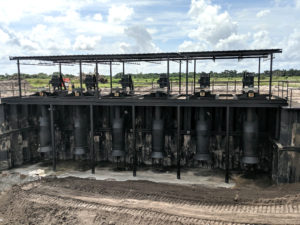
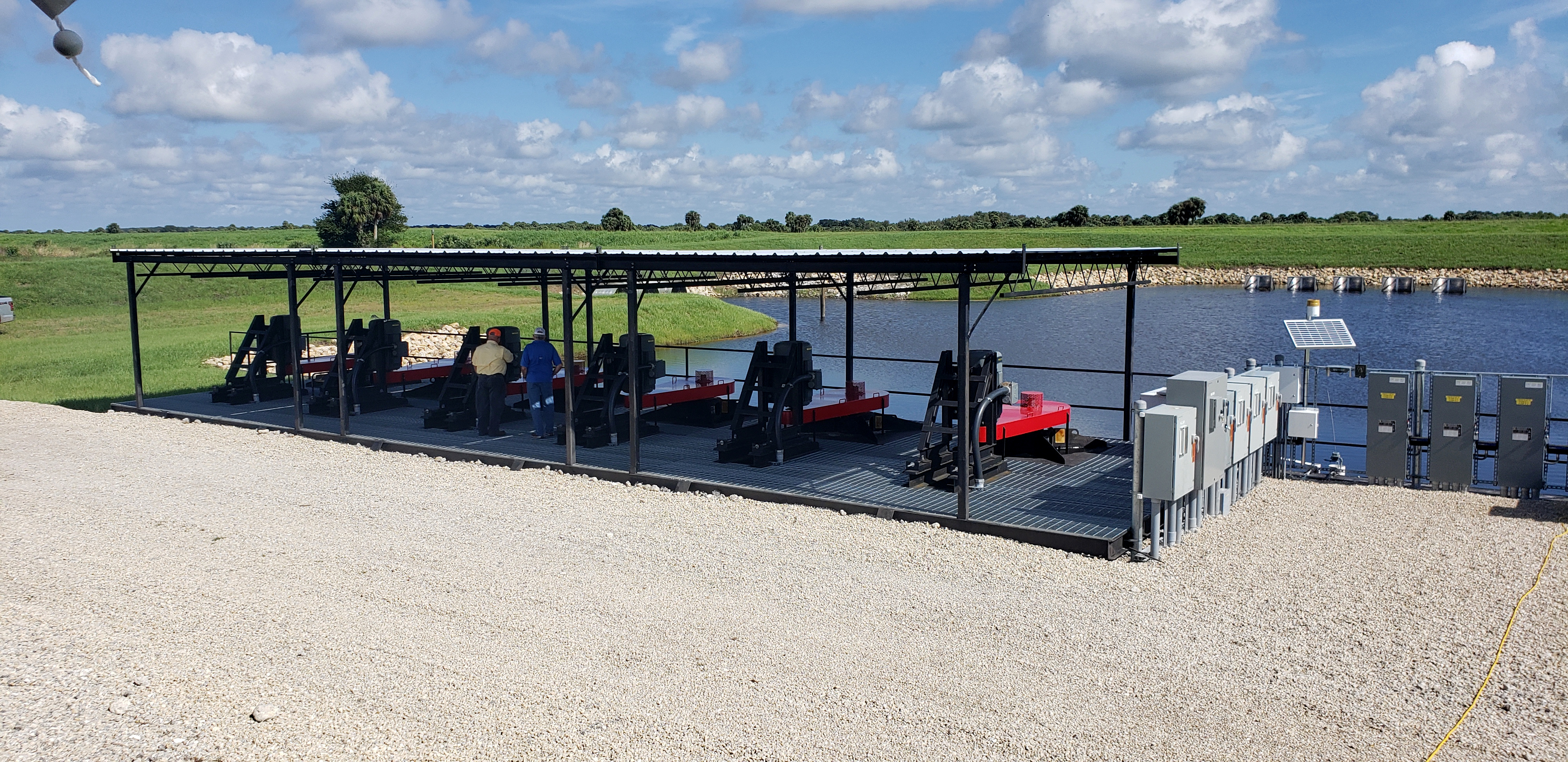
Southwest Florida Water Management District
Coral Creek Ecosystem Restoration Project: Phase 2
Enviro-Tech Systems, Inc. completed this environmental restoration project for the Southwest Florida Water Management District (SWFWMD) in conjunction with the Florida Department of Environmental Protection (FDEP) as part of their Surface Water Improvement and Management Program. The Coral Creek Ecosystem is a 2,600-acre site co-owned by the SWFWMD and FDEP and managed by the FDEP. This particular parcel of land is also part of the Charlotte Harbor Preserve State Park.
A Site-Specific Health, Safety, & Environment Plan, Dewatering Plan, Hurricane Plan, and Stormwater Pollution Prevention Plan were developed for the project. A Notice of Intent and Generic Permit for Stormwater Discharge from Large Development Activity was also obtained through the FDEP. Work activities performed by ETS included survey, turbidity and erosion control, clearing and grubbing, excavation, selective exotic vegetation removal, controlled burning, backfilling of canals, 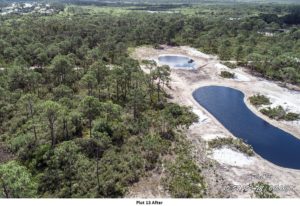 Hydroseeding, upland and wetland planting, and quarterly nuisance vegetation treatment. ETS also worked closely with an environmental engineering firm to locate, protect, and coordinate the relocation of 10 gopher tortoises.
Hydroseeding, upland and wetland planting, and quarterly nuisance vegetation treatment. ETS also worked closely with an environmental engineering firm to locate, protect, and coordinate the relocation of 10 gopher tortoises.
The completed project developed by ETS provides a net benefit to regional aquatic resources and wildlife by restoring historic hydroperiods and overland sheetflow, improving water quality, enhancing shallow water habitat for the endangered Wood Stork, and providing an overall improvement to essential fish habitat in estuarine waters.
 “Spoonbills were not generally detected in this area until development began and we anticipate continued use of the marsh by both of these wading bird species when the project has been completed.” said Stephanie Powers, SFWMD Project Manager for the Phase 2 Project.
“Spoonbills were not generally detected in this area until development began and we anticipate continued use of the marsh by both of these wading bird species when the project has been completed.” said Stephanie Powers, SFWMD Project Manager for the Phase 2 Project.
South Florida Water Management District
Picayune Strand Pump Station Cooling Water Basin Recharge Pumps
 This project involved retrofitting the Merritt and Faka Union Pump stations with new recharge pumps to provide cooling water to the discharge basin when the canal water is too low. The project included piping, control panels, pump, and electrical systems. Some installations occurred underwater and were performed by certified divers under ETS’ direction. During the project, ETS had to redesign the pump configurations to include air release valves ommitted during the original design. ETS also suggested time delay and pump failure alarms be added to the control panel as well as a fail safe to automically turn on the 2nd pump should the first pump fail.
This project involved retrofitting the Merritt and Faka Union Pump stations with new recharge pumps to provide cooling water to the discharge basin when the canal water is too low. The project included piping, control panels, pump, and electrical systems. Some installations occurred underwater and were performed by certified divers under ETS’ direction. During the project, ETS had to redesign the pump configurations to include air release valves ommitted during the original design. ETS also suggested time delay and pump failure alarms be added to the control panel as well as a fail safe to automically turn on the 2nd pump should the first pump fail.
South Florida Water Management District
C-43 Reservoir Site Preparation Project
 The Comprehensive Everglades Restoration Plan involves restoring, protecting, and preserving the water resources of Central and South Florida. As part of this effort, the C-43 West Basin Storage Reservoir will be developed to store and manage runoff as well as regulatory releases from Lake Okeechobee. This particular project targets reestablishing more natural conditions in the Caloosahatchee Estuary.
The Comprehensive Everglades Restoration Plan involves restoring, protecting, and preserving the water resources of Central and South Florida. As part of this effort, the C-43 West Basin Storage Reservoir will be developed to store and manage runoff as well as regulatory releases from Lake Okeechobee. This particular project targets reestablishing more natural conditions in the Caloosahatchee Estuary.
During the wet season, runoff and discharges retained in the Reservoir will no longer reach the Caloosahatchee Estuary, reducing the frequency of undesirable salinity range, which, in turn, revitalize fish and oyster habitats. During the dry
season, the water stored in the Reservoir will provide essential flow to the Estuary, improving the salinity balance and promoting the survival of ecological communities.
The Caloosahatchee River (C-43) West Basin Storage Reservoir Project is located on 10,700 acres of former farmland located in Hendry County, Florida. Once completed, the project will hold approximately 170,000 acre-feet of water with depths ranging from 15 to 25 feet.
In November of 2017, Enviro-Tech Systems, Inc. was awarded the preparation phase of this project by the South Florida Water Management District. Primary objectives were to mechanically mow and clear all vegetation within 2,000 linear feet of the perimeter property line and a 2,000 linear foot wide north/south transecting line. Additionally, work included leveling and grubbing all trees exceeding 4 feet in height from the interior of the project site. This translated to making 10,500 acres of land for the Reservoir development-ready.
During the pre-development phase of the project, the following permits and plans were obtained and developed:
- Site-Specific Health, Safety, & Environment Plan
- PreTask Hazard Mitigation Plan
- Erosion Control Plan
- Environmental Protection Plan
- Clearing Plan
- Stormwater Pollution Prevention Plan
- Notice of Intent and Generic Permit for Stormwater Discharge from Large Development Activity was obtained through the FL Department of Environmental Protection.
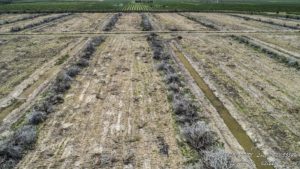 Due to the sheer size of the project, the site was divided into 97 labeled zones, ranging in size from 17 acres to 434 acres. Meeting areas, equipment storage and laydown areas, and ingress and egress routes were planned and disseminated to all crews. Crews of at least two workers were dispatched to adjacent zones to Begin clearing and grubbing activities. The material generated from these activities were then gathered into piles. At this point, a District representative was contacted to verify the clearing and grubbing activities for the block were completed.
Due to the sheer size of the project, the site was divided into 97 labeled zones, ranging in size from 17 acres to 434 acres. Meeting areas, equipment storage and laydown areas, and ingress and egress routes were planned and disseminated to all crews. Crews of at least two workers were dispatched to adjacent zones to Begin clearing and grubbing activities. The material generated from these activities were then gathered into piles. At this point, a District representative was contacted to verify the clearing and grubbing activities for the block were completed.
With Certified Pile Burners and prescribed acreage burners on staff, ETS proposed burning to efficiently handle the masses of debris from the clearing and grubbing process and neutralize more of the seeds dispersed from the grubbed trees. This proposal was approved by the SFWMD. Due to the environmental sensitive nature of the site, ETS developed a Burn Plan detailing the methods and precautions to be undertaken.
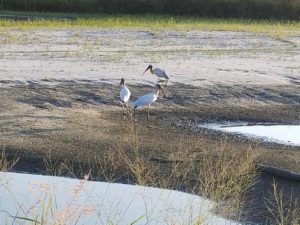 Additionally, wildlife logs were submitted immediately to District staff should a threatened or endangered species be observed on-site. These logs indicated the labeled zone in which the species was observed and the action undertaken to ensure its safety.
Additionally, wildlife logs were submitted immediately to District staff should a threatened or endangered species be observed on-site. These logs indicated the labeled zone in which the species was observed and the action undertaken to ensure its safety.
Once the District representative approved a zone and conditions allowed, ETS’ Certified burners would conduct pile burns. At this point, a District representative would once again be contacted to verify the zone had been completed.
As part of a Change Order, the SFWMD requested that ETS also developed a Quality Control/Quality Assurance Testing Facility, which included a 2,400 SF steel building and related site improvements. This work included the design and erection of a 30’ x 80’ x 14’
steel metal building with concrete slabs and dual zone air conditioner, electrical and site lighting, three 8’ x 20’ storage containers, lightning protection and grounding, 3,000 gpd water treatment and reverse osmosis system with appurtenances, building permits, four hose bibs, wash sink and counter, five concrete shaker tables, gate, and fencing.
 The experience gained by ETS working with large operations evolving expansive tracts of land in Central and South Florida’s unique environments gives the company an edge in performing projects that involve extensive amounts of earthwork. ETS’ ability to apply strategic and innovative methods to efficiently accomplish earthwork activities and their use of cost-effective procedures provides an unparalleled benefit to their clients. This particular project for the SFWMD was completed months ahead of schedule for a fraction of the cost submitted by other bidders.
The experience gained by ETS working with large operations evolving expansive tracts of land in Central and South Florida’s unique environments gives the company an edge in performing projects that involve extensive amounts of earthwork. ETS’ ability to apply strategic and innovative methods to efficiently accomplish earthwork activities and their use of cost-effective procedures provides an unparalleled benefit to their clients. This particular project for the SFWMD was completed months ahead of schedule for a fraction of the cost submitted by other bidders.
South Florida Water Management District
Southern CREW Restoration Project
The Corkscrew Regional Ecosystem Watershed (CREW) spans more than 60,000 acres in both Lee and Collier counties. It provides natural flood protection, water purification, and critical aquifer recharge as well as serving as an important habitat for animal species, such as the endangered Florida panther, snail kite, and wood stork.
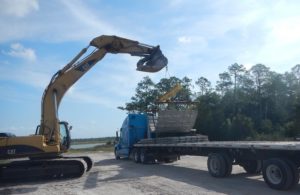 The historic sheet flow in the region had become drastically altered as residential communities and agricultural operations established themselves. However, these modifications also left the area prone to flooding. Over a period of a decade, the South Florida Water Management District acquired approximately 4,000 acres in the Southern CREW region to implement a project to protect residents and their properties from flooding, while protecting and improving the environment. In 2016, with Enviro-Tech Systems, Inc. (ETS) as their prime Contractor, the SFWMD undertook a project to help restore the natural hydrology of 1,000 acres in the Southern CREW region.
The historic sheet flow in the region had become drastically altered as residential communities and agricultural operations established themselves. However, these modifications also left the area prone to flooding. Over a period of a decade, the South Florida Water Management District acquired approximately 4,000 acres in the Southern CREW region to implement a project to protect residents and their properties from flooding, while protecting and improving the environment. In 2016, with Enviro-Tech Systems, Inc. (ETS) as their prime Contractor, the SFWMD undertook a project to help restore the natural hydrology of 1,000 acres in the Southern CREW region.
The work completed by ETS included clearing and burning trees and brush along ditch and canal alignments, degrading berms and roads, removing spoil piles, backfilling ditches and canals, developing ditch and canal plugs, and developing low water and culvert crossings. ETS also developed a wood stork foraging area.
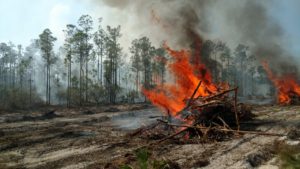 All of this work allowed the area to return to its natural hydrological conditions of periodic inundation. The restoration project benefits the entire Southwest Florida ecosystem and its residents by restoring wetlands and historic sheetflow of water, improving regional flood protection, drainage and increasing water storage and aquifer recharge capability.
All of this work allowed the area to return to its natural hydrological conditions of periodic inundation. The restoration project benefits the entire Southwest Florida ecosystem and its residents by restoring wetlands and historic sheetflow of water, improving regional flood protection, drainage and increasing water storage and aquifer recharge capability.
 ETS applies their unique and extensive experience providing development services in environmentally sensitive areas to successfully develop projects that meet the needs and goals of the client, while conserving or improving important natural resources in a state with increasingly strict regulatory requirements. Partnering with government agencies has allowed ETS to implement numerous water quality and environmental restoration and
ETS applies their unique and extensive experience providing development services in environmentally sensitive areas to successfully develop projects that meet the needs and goals of the client, while conserving or improving important natural resources in a state with increasingly strict regulatory requirements. Partnering with government agencies has allowed ETS to implement numerous water quality and environmental restoration and
conservation projects, protecting Florida’s natural environment for generations to come.
Southwest Florida Water Management District
Serenova Preserve Restoration Project
This project involved the restoration of the Cone Development Borrow Pits on SWFWMD’s Serenova Preserve. A site-specific safety plan was developed for this project and the scope of work included debris handling and debris recycling/removal, excavation, on-site and off disposal, spoil overburden grading and leveling, pond site slope grading, soil and road stabilization, plant material procurement, upland and wetlands planting, and the installation of two water-filled borrow areas, referred to as North and South Pits.
City of Gainesville
Beville Creek Restoration and Slope Stabilization at Cofrin Nature Park
The goal of this project was to restore natural flow and function to Beville Creek in Cofrin Nature Park. ETS developed a site-specific safety plan for the project and development occurred without disrupting the operation of the Park. The scope of work included grading and stabilizing undercut and unstable creek banks, removal of CMP pipe and associated structures that were interfering with the natural function of the creek, removal of objectionable materials from the banks and creek bed, installation of a prefabricated pedestrian bridge, restore creek bed elevations, and the final installation of grasses, tree, and other native vegetation to stabilize creek banks.
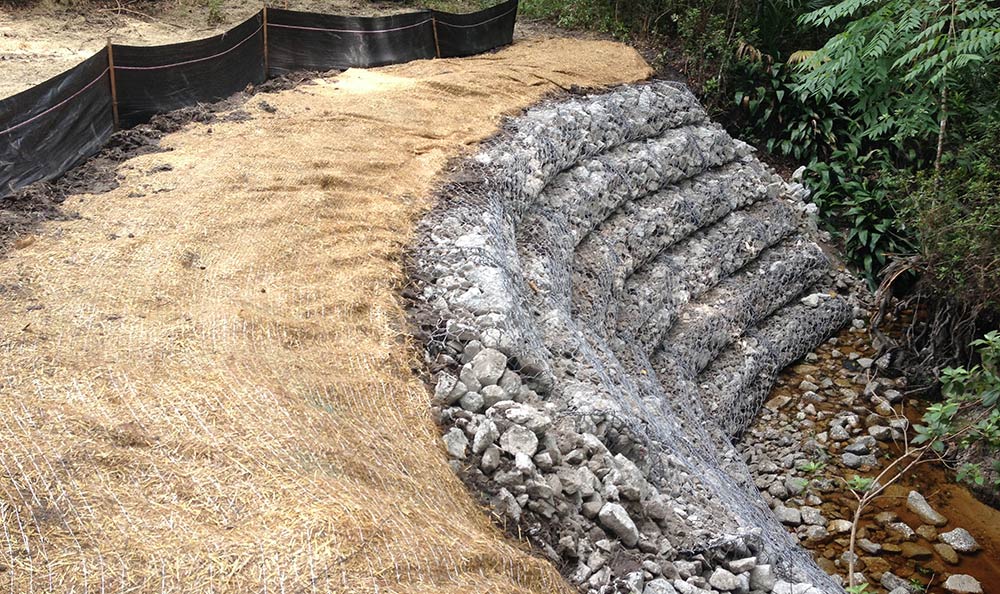
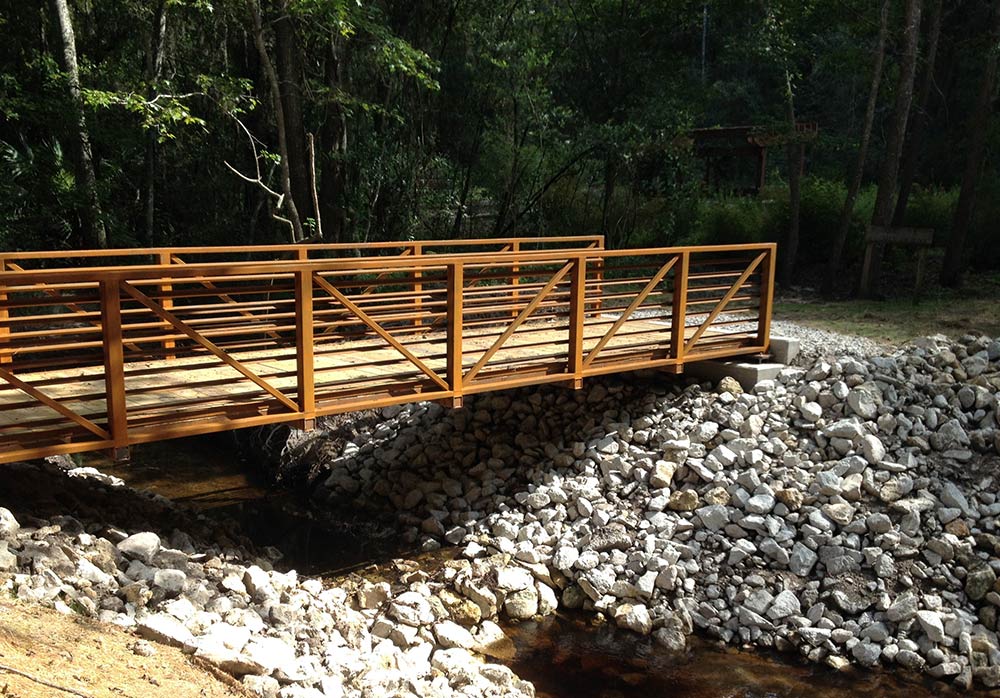
Manatee County
Duette Preserve Watershed Improvement Project
The goal of this project was to improve the hydrologic functions of weltands within the East Fork Manatee River basin on the Duette Preserve Park property owned my Manatee County. Improving the hydrologic function of wetlands helps improve the environment and foster the development of habitats for native flora and fauna. The scope of work completed by ETS consisted of filling approximately 16,500 linear feet of ditches (including 10 ditch blocks), excavation and grading of 450 feet of swales, and the placement of 270 linear feet of 18” HDPE storm pipe at two locations and 262 linear feet of 12” HDPE storm pipe at one location.
Okeechobee County
US HWY 98 Ditch Culvert Replacements and Dry Retention Area
As part of the Disaster Recovery Community Development Block Grant Program, the goal of this project was to provide better drainage for residential areas upstream. The work consisted of clearing and grubbing, structure removal, excavation, earthfill, paving, reinstalling railroad spur line, installing rip rap, and seeding and mulching. Specifically, development included: one 5 feet high x 10 feet wide x 40 feet long concrete box culvert with concrete headwalls, two 4 feet high x 14 feet wide x 60 feet long concrete box culverts with concrete headwalls, one twin 4 feet high x 8 feet wide x 64 feet long concrete box culverts with concrete headwalls, one 9.5 feet high x 13.5 feet wide x 24 feet long corrugated arched metal pipe, and a ¼ acre dry retention area.
Waste Management, Inc.
2013 Wetland Mitigation Development
ETS created a wetland approximately 300 acres in size. This process involved dewatering, wet excavation, removing water control structures, installing low water crossing, erosion control, and installing monitoring wells to monitor level of wetland once developed.
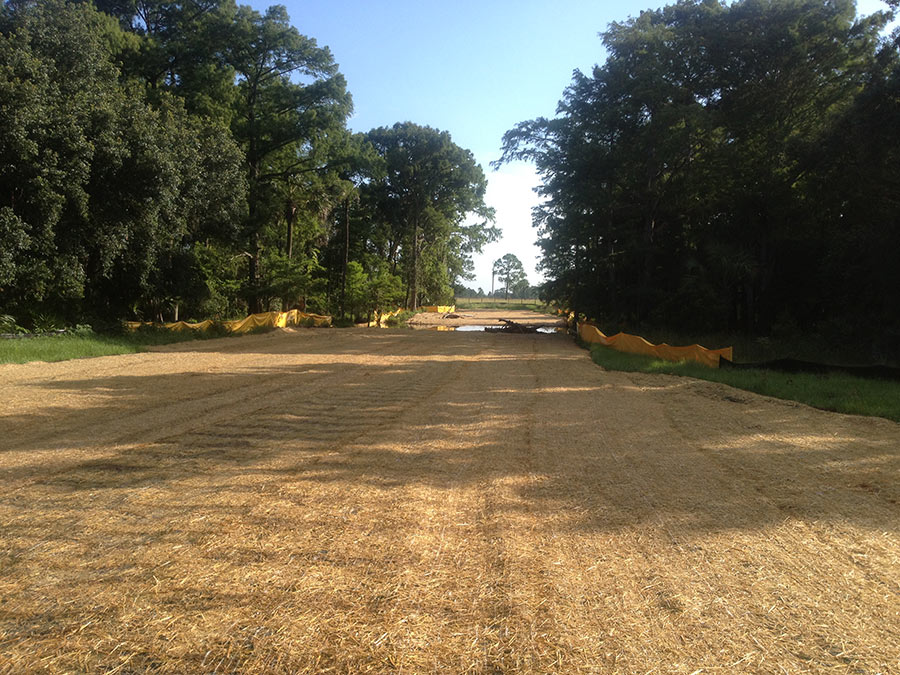
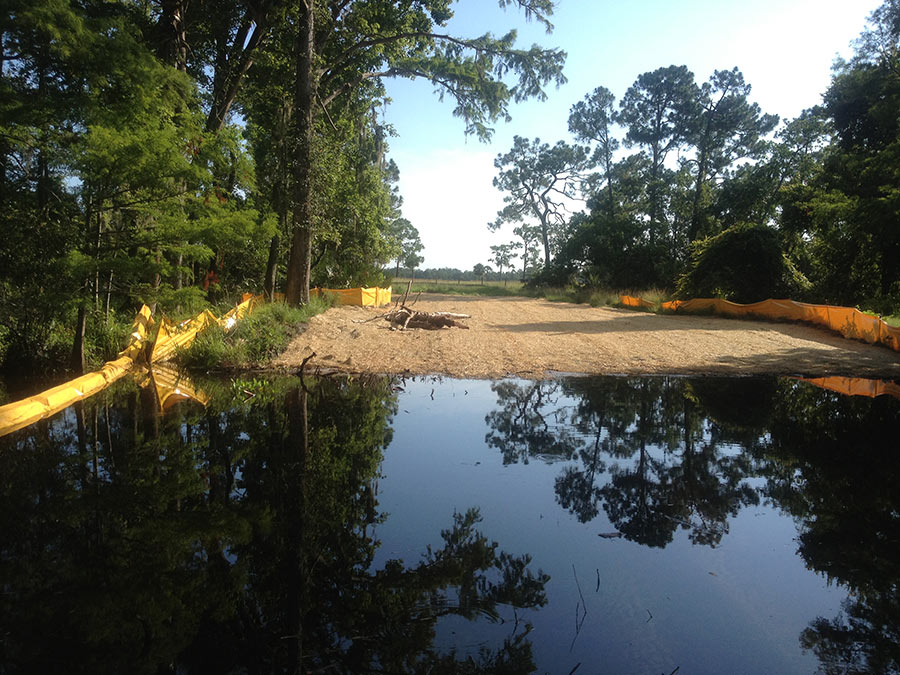

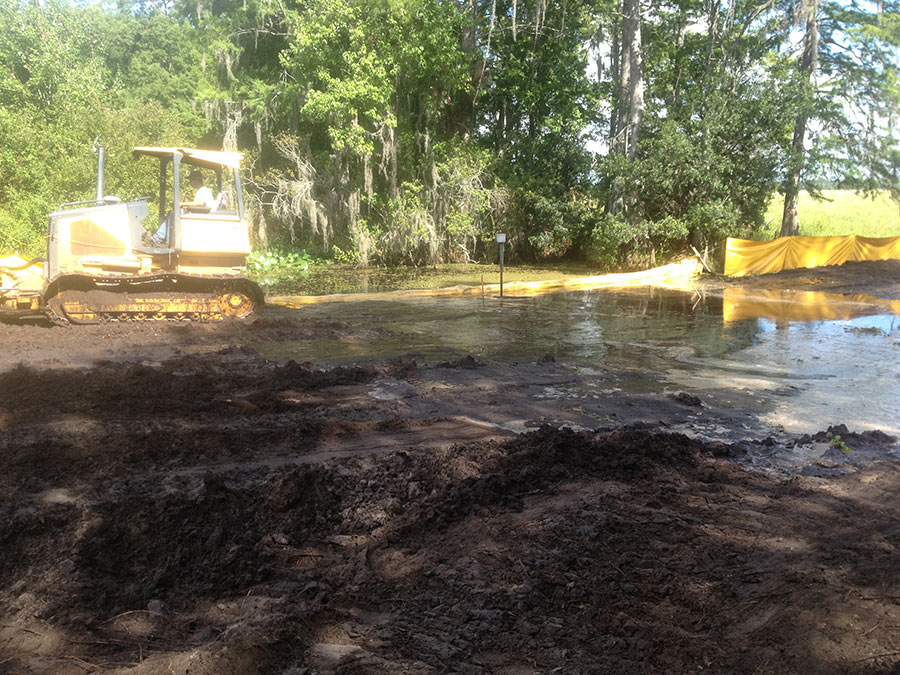
USDA/NRCS
Mary’s Creek Wetlands Reserve Program
The WRP is a voluntary program offering landowners the opportunity to protect, restore, and enhance wetlands on their property. The USDA/NRCS provides technical and financial support to help landowners with their wetland restoration efforts. The NRCS goal is to achieve the greatest wetland functions and values, along with optimum wildlife habitat, on every acre enrolled in the program. This particular WRP involved a 600-acre area that had been previously drained for farming and cattle ranching. The goal of this WRP project was to better control the amount of drainage in the project area, which promotes a more natural hydroperiod and helps to restore onsite wetlands. The work consisted of clearing and grubbing, structure removal, excavation, earthfill, re-developing a meandering portion of a creek, installing geocell for low water crossings, installation a ConTech bridge, installing rip rap, and seeding and mulching.
